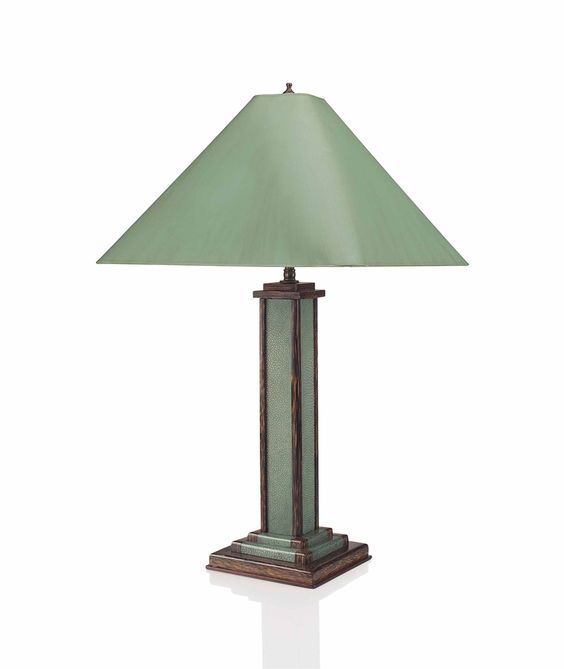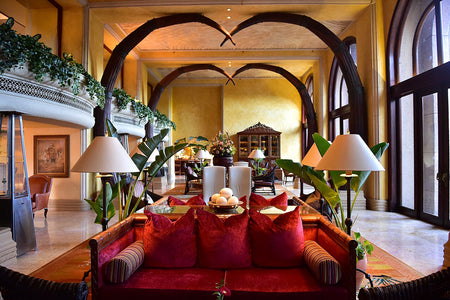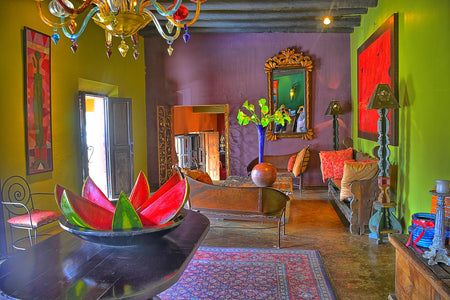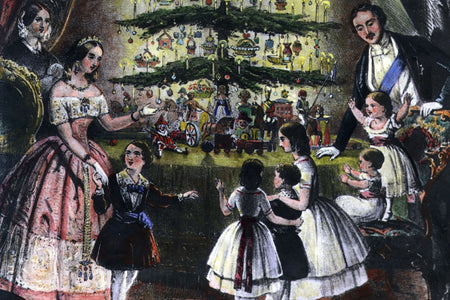
From art nouveau to postmodernism, our blog series shows how the domestic table lamp holds the key to understanding the whole history of design. In this episode we reach the 1920s, and the movement known as Art Deco…
The first three decades of the 20th Century saw the birth of modernism, which took as its fundamental principle ‘form follows function’. In other words, the design of an object – whether a table lamp or a tower block of flats – should be based upon its practical purpose. Modernism emphasized utility, mass-production and, sometimes, a minimalist aesthetic. But every action has a reaction, and in the 1920s and 30s a style appeared that, while sometimes appearing ‘modernist’ in its use of striking geometric forms, had a philosophy that was the very opposite of modernism. It favoured exquisite craftsmanship, expensive materials fashioned by hand, and glamourous exclusivity rather than mass consumption. It became known as ‘Art Deco’, and it was first and foremost about luxury.
Exposition des arts décoratifs, 1925
Between April and October 1925 the French government put on an enormous world’s fair to showcase the new style moderne of design in architecture, furniture, jewelry and other decorative arts. It was hosted in Paris, in huge spaces on both sides of the Seine, with some 15,000 exhibitors from twenty different countries and in total it attracted some sixteen million visitors.
Entitled the Exposition Internationale des Arts Décoratifs et Industriels Modernes (‘International Exhibition of Modern Decorative and Industrial Arts’), the contemporary styles on show became known under the abbreviated name ‘Art Deco’. They were applied to almost everything, from clothes to cars, buildings to brooches, cinemas to vacuum cleaners. Trains, ocean liners, even typefaces are still instantly recognisable as being of the Art Deco styles. But what were those styles? The truth is that the Art Deco movement included a real mish-mash of influences, borrowing from sources as varied as art nouveau and cubism, from the earlier, opulent craftsmanship of the 18th century, and from exotic fabrics and patterns of China Japan, India and Persia. Ancient Egyptian motifs were a common feature of Art Deco.
'Victoire 2' hood ornament by glassmaker Rene Lalique - Toyota Automobile Museum. Image credit.
Interior of Grauman's Egyptian Theatre, Hollywood in 1922
So Art Deco it took all sorts of forms and is not easy to define. However, table lamps provide the perfect illustrations of its various themes. Here are five examples...
Art Deco in five iconic table lamps
1) Raymond Subes – Table light (1922)
This table light by the French ironworker Raymond Subes was shown at the 1922 Salon des Artistes Decorateurs, three years before the 1925 Paris exhibition. It is a good example of how the art nouveau designers of the turn of the century, with their naturalistic forms, continued to exert an influence on craftsmen of the 1920s. The finely detailed wrought-iron base includes nouveau-style floral motifs, while the striking glass dome is contrastingly modernist in feel. Art Deco combined all manner of styles – but the key features were fine craftsmanship and luxury.
2) Clement Rousseau – Table light (1923)
Art Deco objects frequently employed exotic materials. This supremely elegant table lamp by Clement Rousseau is made of palm wood and tinted shagreen, but despite the rarefied materials is understated and exquisitely tasteful in its style and proportions. This lamp is French Art Deco at its best.
3) René Lalique – Camelia table lamp (1928)
René Jules Lalique was one of the most celebrated glass designers of the art nouveau period, producing numerous stunning items of jewellery in the 1880s and 1890s. But in the 1920s he moved strongly away from the earlier organic style and reinvented himself as the master of Art Deco glassware. The beautiful, light, stylized forms of the Camelia table lamp with its simple rectangular glass shade exemplify the Lalique approach to Art Deco.
4) Pierre Chareau – LP180 (1930)
Chareau was one of Europe’s most important architects and designers of the first half of the 20th Century. He worked in many styles over his career, but the LP180 is striking for the way it employs Cubist influences. Made of wrought iron with alabaster diffusers, this lamp is like Art Deco in the style of Picasso.
5) Sognot & Alix – Table light (1930s)
Art Deco was the first truly international movement, particularly in architecture, where variants appeared in Russia, Latin America, Africa and Asia, as well as Europe and the United States. Between 1930 and 1937, the rather dandyish Maharajah of Indore hired the cream of European Art Deco talent (including the German architect Eckart Muthesius) to create a jaw-dropping palace. This nickel-and-glass table lamp by French duo Louis Sognot and Charlotte Alix is one of several amazing lights in the Indian-European Art Deco paradise.
The end of Art Deco
The opulence and exuberant stylistic borrowings of the Art Deco movement left the world looking more stylish than ever. From New York’s famous Chrysler building to Eltham Palace in Greenwich (one of our ‘Amazing Interiors’ series), the 1920s and 1930s were one of the most fascinating periods in the history of design.
Eltham Palace entrance hall - Image © English Heritage
But the Second World War brought the luxurious Art Deco period to an end, and from 1939 onwards the more functional styles of modernism reasserted themselves. However, as the 20th century went on, modernism was to develop in all sorts of interesting and unexpected ways. And as ever, table lamps show the way…
Pooky's Art Deco-inspired Tristan and Isolde table lamps
The History of Design in Table Lamps series: Part 1: Thomas Edison to Art Nouveau Part 2: The Birth of Modernism Part 3: Art Deco Part 4: Midcentury Modernism Part 5: Pop and Postmodernism





















